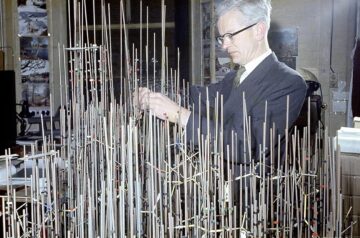Luke Gebel et al in Nature:
 The Medical Research Council’s Laboratory of Molecular Biology (LMB) in Cambridge, UK, is a world leader in basic biology research. The lab’s list of breakthroughs is enviable, from the structure of DNA and proteins to genetic sequencing. Since its origins in the late 1940s, the institute — currently with around 700 staff members — has produced a dozen Nobel prizewinners, including DNA decipherers James Watson, Francis Crick and Fred Sanger. Four LMB scientists received their awards in the past 15 years: Venkatraman Ramakrishnan for determining the structure of ribosomes, Michael Levitt for computer models of chemical reactions, Richard Henderson for cryo-electron microscopy (cryo-EM) and Gregory Winter for work on the evolution of antibodies (see Figure S1 in Supplementary information; SI). Between 2015 and 2019, more than one-third (36%) of the LMB’s output was in the top 10% of the world’s most-cited papers1.
The Medical Research Council’s Laboratory of Molecular Biology (LMB) in Cambridge, UK, is a world leader in basic biology research. The lab’s list of breakthroughs is enviable, from the structure of DNA and proteins to genetic sequencing. Since its origins in the late 1940s, the institute — currently with around 700 staff members — has produced a dozen Nobel prizewinners, including DNA decipherers James Watson, Francis Crick and Fred Sanger. Four LMB scientists received their awards in the past 15 years: Venkatraman Ramakrishnan for determining the structure of ribosomes, Michael Levitt for computer models of chemical reactions, Richard Henderson for cryo-electron microscopy (cryo-EM) and Gregory Winter for work on the evolution of antibodies (see Figure S1 in Supplementary information; SI). Between 2015 and 2019, more than one-third (36%) of the LMB’s output was in the top 10% of the world’s most-cited papers1.
What is the secret of the LMB’s success? Many researchers and historians have pointed to its origins in the Cavendish Laboratory, the physics department of the University of Cambridge, UK, where researchers brought techniques such as X-ray crystallography to bear in the messy world of biology. Its pool of exceptional talent, coupled with generous and stable funding from the Medical Research Council (MRC), undoubtedly played a part. However, there is much more to it. None of these discoveries was serendipitous: the lab is organized in a way that increases the likelihood of discoveries.
More here.
